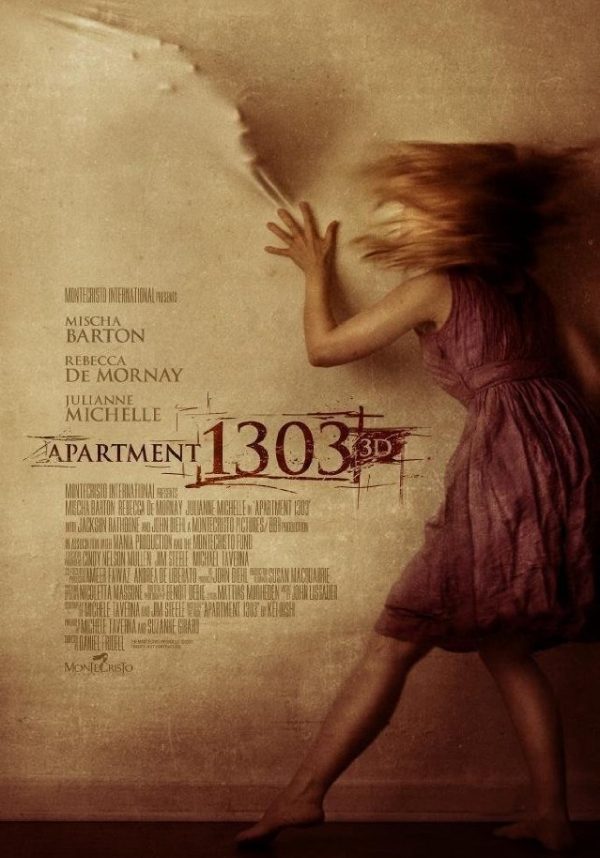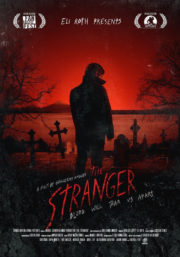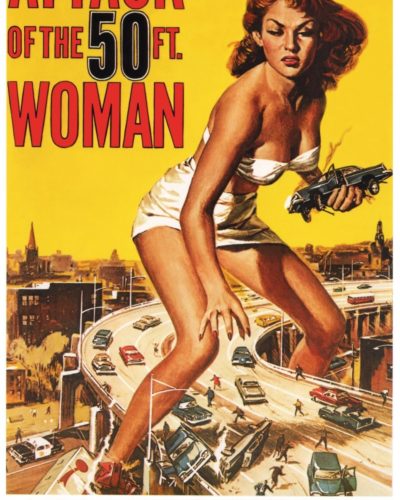Whispers in the Walls: The Haunting Dissonance of Apartment 1303 3D
“Sometimes, the dead linger in the places we live.” This eerie quote encapsulates the foreboding essence of Apartment 1303 3D, a horror movie that attempts to merge the conventional haunted house trope with the modern trappings of a 3D cinematic experience. Directed by Micheal Taverna, the 2012 film is an American adaptation of the 2007 Japanese movie of the same name, targeting viewers who are ready to witness supernatural realms colliding with the all-too-familiar settings of our mundane existence. The story unfolds as Janet (Julianne Michelle) moves into Apartment 1303, only to discover that her new home bears the scars of a tragic past. Her sister Lara (Mischa Barton) delves deeper into the mystery, uncovering the chilling truth that the apartment might not be as empty as it seems.
Manufacturing Dread: A Ghostly Atmosphere in High Definition
The horror of Apartment 1303 3D hinges heavily upon its atmosphere, one laden with the weight of grief and the stain of prior tragedy. Taverna attempts to set a tone of unnerving discomfort, using dim lighting and dreary interiors to create a space that feels at once claustrophobic and hauntingly expansive. Unfortunately, the use of 3D technology often undercuts the intended suspense, trading eerie subtlety for gimmickry that distracts more than it horrifies. Tension-building, a staple in horror craftsmanship, is compromised by predictable tropes and an overreliance on common jump scares that may startle momentarily but lack enduring impact.
Chiaroscuro in the Urban Haunt: Cinematography and Visual Disquiet
The cinematography of Apartment 1303 3D fluctuates with varying degrees of success. The film employs a cold, washed-out color palette that complements its ghostly premise, but moments of potential visual intrigue are often overshadowed by the awkward staging and flat lighting that fail to deliver on the 3D’s promise. Certain camera angles and movements do well to express the protagonist’s spiraling descent into the apartment’s malevolent influence, yet these instances are too few to make a lasting impression. Visual effects waver, at times aligning with the genre’s expectations but often landing in the territory of unintentional camp, thus weakening the intended fear factor.
A Symphony of Screams: Audio Effects in Service to Dread
Audio often plays a pivotal role in amplifying horror, and here, the film makes a genuine effort. The soundtrack’s eerie strings and dissonant chords are meant to unsettle, scraping against the audience’s comfort like a hidden presence in a darkened room. Sound effects, including the clichéd whispers and sudden loud noises, are textbook horror but occasionally hit the mark in creating a sense of lingering dread. Moments of silence are applied to precede the scares, though a more refined use of quietude may have yielded a more profound effect.
Scream Queens and Character Credibility: A Study on Performance
Inhabitants of this tormented space are portrayed with a mix of dedication and disconnection. Julianne Michelle’s portrayal of Janet sparks empathy, hinging on innocence invaded by terror, even if her transitions into sheer panic sometimes feel forced. Mischa Barton as Lara strives to channel a determined sister’s heartbreak and horror, but the lack of character depth across the board limits the reach of performances. The actors’ endeavours to embody the film’s macabre essence are commendable, yet without well-developed characters to portray, their capacity to truly evoke fear is constrained.
Familiar Shadows: Horror Element Categorization and Effectiveness
Apartment 1303 3D situates itself firmly within the realm of supernatural horror but does so without much innovation or deviation from established norms. Expect ghostly apparitions, unnerving children, and distorted realities, all serving as the primary vehicles for fear. While these elements have been the backbone of countless horror legends, their execution here borders on the routine, occasionally causing the scare tactics to feel more lackluster than leg-chilling.
Reflecting Fear: The Hidden Depths Behind The Haunt
Despite its conventional approach, the film grazes deeper themes of isolation, familial dysfunction, and the hauntingly destructive nature of secrets. These beneath-the-surface ideas offer a scaffold for more nuanced horror, but the movie’s superficial treatment seldom allows them to flourish or resonate with the intended psychological impact. Viewers are left with glimmers of what could be profound thematic exploration but are ultimately returned to the surface-level screams and thrills.
Scaring Up the Verdict: A Ghost Story in 3D or 3D Disappointment?
While Apartment 1303 3D may pose as a modern addition to the spectral narratives of horror, its reliance on cliche and an unsuccessful blending of 3D technology with atmosphere-driven terror render it a pale specter of what could be. The movie may provoke a few startled jumps from the casual viewer, but seasoned horror aficionados are unlikely to find the fresh scares or lasting unease they crave. For those seeking genuine frights, this film may not be the best investment of time. Nevertheless, it might serve as a mild diversion for those new to the genre or for die-hard fans of the cast.
Horror enthusiasts seeking the deep, disturbing thrills characteristic of the genre’s best may find themselves better served by revisiting genre classics or exploring fresher, more innovative offerings. Apartment 1303 3D echoes with potential yet fails to leave a mark, encumbered by the very tropes it tries too hard to embody.
In conclusion, while the movie might pique curiosity, it ultimately falls flat, overshadowed by its stronger contemporaries and the hauntingly superior storytelling of horror’s crowned jewels. Viewers should be advised that the effects and themes of the film, although relatively tame by modern standards, may still be unsettling or triggering for some.




